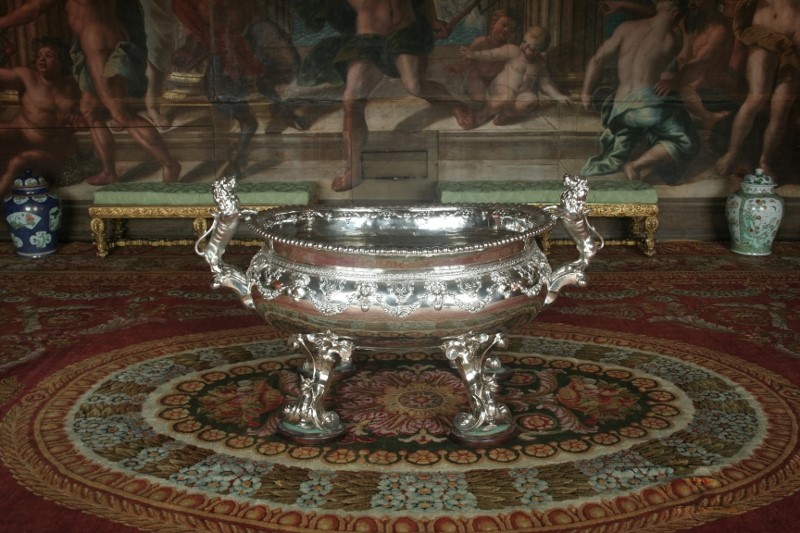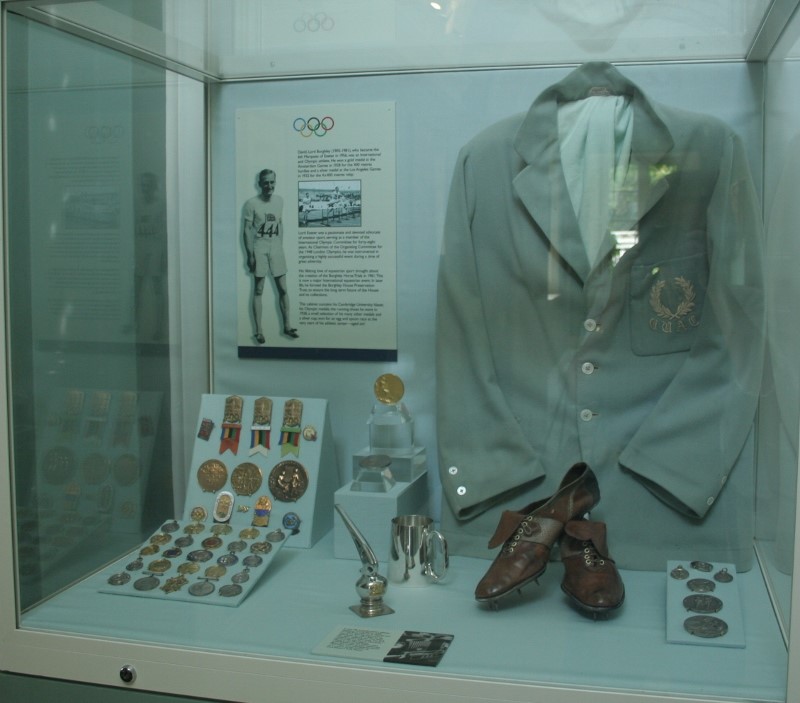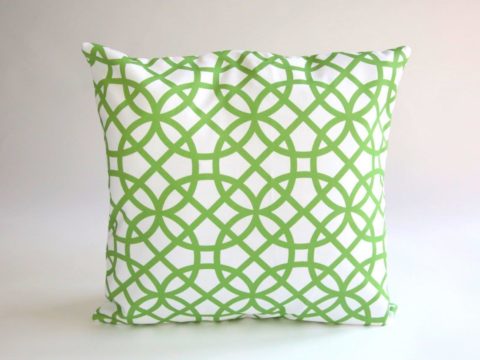Burghley House
An Elizabethan Prodigy House
Chapter 3 : West & South Ranges
Turning along the west-side, the original Long Gallery which would have extended the whole length of the house, has been separated into individual rooms, ‘enfilade’. The first of these is the Marquetry Room where the marquetry cabinets would make the mouth of any carpenter hang open in amazement at their rich complexity.
The next room is named Queen Elizabeth’s bedroom and is decorated in a rather lovely sea-green. It is not well-named, however, as the Queen never actually visited Burghley.
The Pagoda Room, which follows on, has a number of interesting Tudor portraits – Lord Burghley himself by Marcus Gheeraerts the Younger (1561 – 1636) and one by Gheerhaerts of Elizabeth. Painted after her death, it shows the queen as an elderly lady, rather than in the full pomp of her heyday. The fairly well-known portrait of Henry VIII by Joos Van Cleve is also in this room, and there are representations of Burghley’s elder son, Thomas Cecil, 1 st Earl of Exeter, and Robert Devereux, Earl of Essex who was Burghley’s ward.
The West corridor continues with further sumptuously furnished bedrooms, completed by 1700, until it culminates in the First George Room – a smaller room connecting the West and South fronts, with a jewel closet off it. There are more Counter-Reformation confections, and some superb Boule-inspired furniture.
The South corridor overlooks the (private) gardens – lawns and topiary, pleasing to the eye, looking down from the height of the windows. The rooms are named the Second, Third and Fourth George rooms, and are decorated in the style of the late eighteenth century. This was the suite of rooms used by Queen Victoria and Prince Albert on their visit in 1844, and much of the furniture dates from then.
At the end of the South corridor is the Heaven Room. This is quite extraordinary – the walls and ceiling are a single vast painting by the Baroque artist Antonio Verrio (c. 1636 – 1701) depicting endless quantities of greater and lesser Classical gods and goddesses – eating, drinking, gesticulating and cavorting, frequently without the benefit of clothes. Let us hope the chilly winters of Lincolnshire aren’t proving too much of a problem. Even more extraordinary, in Heaven, is the gigantic silver champagne cooler, the size of a small bath, weighing some 18 stone – perhaps the gods come down at night to bathe in it!

From Heaven, you pass into Hell, depicted in rather overwhelming technicolour on the ceiling and walls of the Hell Staircase. The ceiling was Verrio’s final commission at Burghley, although the walls were completed by Thomas Stothard in the early nineteenth century. The centrepiece of Verrio’s ceiling, is a great gaping mouth, strangely reminiscent of the type of illustration seen on modern fantasy novels.
The beautiful stone cantilevered staircase leads one back into the relative sobriety of the Great Hall – which largely dates from the building of the house. The sixty foot high ceiling is of double hammer-beam construction, arching over a space some 68 ft by 30 ft.
Emerging from the Great Hall, into a narrow passage, you encounter an exhibition devoted to David, 6 th Marquess of Exeter, who in his youth was a famous sportsman, winning gold in the 1928 Olympics for 400m hurdles. After the War, he was responsible for organising the ‘Austerity Olympics’ of 1948, with resounding success. He still holds the record for running around the Great Courtyard at Trinity College, Cambridge, as depicted in the film 'Chariots of Fire'. His sporting kit is displayed, and I was overcome by the tininess of his running shoes – I cannot imagine how an adult man could wear them!

The corridor passes the Orangery Restaurant, where a range of local produce is served in a lovely room with an outdoor terrace. We didn’t sample the food, having had a coffee (adequate) and a shortbread biscuit (good) in the garden café earlier.






